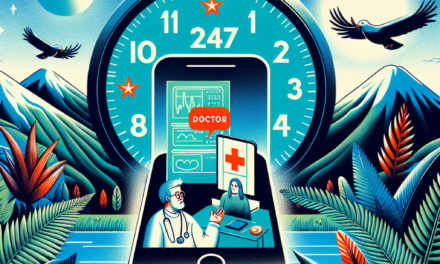HIMSSCast: Enhancing Outcomes with Digital Tools and SDOH Data

In the rapidly evolving landscape of healthcare, the integration of digital tools and Social Determinants of Health (SDOH) data is becoming increasingly crucial. HIMSSCast, a platform dedicated to exploring these intersections, provides valuable insights into how technology and data can enhance healthcare outcomes. This article delves into the multifaceted ways digital tools and SDOH data are transforming healthcare, offering a comprehensive analysis of their impact and potential.
The Role of Digital Tools in Modern Healthcare
Digital tools have revolutionized the healthcare industry, offering innovative solutions to age-old problems. From electronic health records (EHRs) to telemedicine, these technologies are reshaping how care is delivered and managed.
Electronic Health Records (EHRs)
Electronic Health Records (EHRs) have become a cornerstone of modern healthcare, providing a digital version of a patient’s paper chart. EHRs are real-time, patient-centered records that make information available instantly and securely to authorized users.
One of the primary benefits of EHRs is the improvement in patient care. By having access to comprehensive patient data, healthcare providers can make more informed decisions. EHRs facilitate better coordination among different healthcare providers, reducing the risk of errors and improving patient outcomes.
Moreover, EHRs enhance efficiency by reducing paperwork and streamlining administrative tasks. This allows healthcare professionals to focus more on patient care rather than administrative duties. According to a study by the Office of the National Coordinator for Health Information Technology, 96% of hospitals in the United States had adopted EHRs by 2019, highlighting their widespread acceptance and utility.
Telemedicine
Telemedicine has emerged as a vital tool in expanding access to healthcare, especially in remote and underserved areas. By leveraging telecommunications technology, telemedicine allows patients to consult with healthcare providers without the need for physical travel.
The COVID-19 pandemic accelerated the adoption of telemedicine, as it provided a safe and effective way to deliver care while minimizing the risk of virus transmission. A report by McKinsey & Company found that telehealth usage increased 38 times from the pre-COVID-19 baseline, indicating a significant shift in how healthcare services are accessed.
Telemedicine offers numerous benefits, including increased convenience for patients, reduced travel time, and the ability to reach specialists who may not be available locally. It also helps in managing chronic conditions by providing regular monitoring and follow-up care, thus improving patient outcomes.
Mobile Health Applications
Mobile health applications, or mHealth apps, are another digital tool transforming healthcare. These apps provide users with access to health-related information and services through their smartphones or tablets.
mHealth apps cover a wide range of functions, from fitness tracking and medication reminders to chronic disease management and mental health support. They empower patients to take control of their health by providing them with tools to monitor their conditions and make informed decisions.
According to a report by IQVIA, there are over 318,000 health apps available on major app stores, with more than 200 new apps being added daily. This proliferation of mHealth apps underscores their growing importance in the healthcare ecosystem.
Artificial Intelligence in Healthcare
Artificial Intelligence (AI) is playing an increasingly significant role in healthcare, offering new possibilities for diagnosis, treatment, and patient care. AI algorithms can analyze vast amounts of data quickly and accurately, providing insights that were previously unattainable.
One of the key applications of AI in healthcare is in medical imaging. AI-powered tools can assist radiologists in detecting abnormalities in X-rays, MRIs, and CT scans with high precision. A study published in The Lancet Digital Health found that AI algorithms could match or even surpass human experts in diagnosing certain conditions from medical images.
AI is also being used to develop personalized treatment plans by analyzing patient data and predicting how individuals will respond to different therapies. This approach, known as precision medicine, has the potential to improve treatment outcomes and reduce adverse effects.
Wearable Technology
Wearable technology, such as fitness trackers and smartwatches, is becoming increasingly popular among consumers. These devices collect data on various health metrics, including heart rate, physical activity, and sleep patterns.
Wearables offer valuable insights into an individual’s health and can help detect early signs of potential health issues. For example, some smartwatches can monitor heart rhythms and alert users to irregularities that may indicate atrial fibrillation, a condition that can lead to stroke if left untreated.
The integration of wearable technology into healthcare systems can enhance patient engagement and promote preventive care. By providing real-time feedback, wearables encourage users to adopt healthier lifestyles and make informed decisions about their health.
Understanding Social Determinants of Health (SDOH)
Social Determinants of Health (SDOH) are the conditions in which people are born, grow, live, work, and age. These factors have a significant impact on health outcomes and contribute to health disparities among different populations.
Defining SDOH
SDOH encompass a wide range of factors, including socioeconomic status, education, neighborhood and physical environment, employment, social support networks, and access to healthcare. These determinants influence health behaviors and outcomes, often in complex and interrelated ways.
The World Health Organization (WHO) defines SDOH as “the non-medical factors that influence health outcomes.” Addressing SDOH is essential for achieving health equity and improving overall population health.
The Impact of SDOH on Health Outcomes
Research has shown that SDOH can have a more significant impact on health outcomes than medical care alone. For example, individuals with lower socioeconomic status often experience higher rates of chronic diseases, such as diabetes and heart disease, due to limited access to healthy food, safe housing, and quality healthcare.
Education is another critical determinant of health. Higher levels of education are associated with better health outcomes, as education provides individuals with the knowledge and skills needed to make informed health decisions. Additionally, education is linked to higher income levels, which can improve access to healthcare and other resources.
Neighborhood and physical environment also play a crucial role in health. Living in areas with high levels of pollution, crime, or limited access to recreational facilities can negatively impact health outcomes. Conversely, communities with access to green spaces, safe walking paths, and healthy food options tend to have healthier populations.
Addressing SDOH in Healthcare
To effectively address SDOH, healthcare providers must adopt a holistic approach that considers the social, economic, and environmental factors affecting patients’ health. This involves integrating SDOH data into clinical practice and developing interventions that target these determinants.
One approach is to incorporate SDOH screening tools into patient assessments. By identifying social and environmental factors that may be impacting a patient’s health, providers can develop personalized care plans that address these issues. For example, a patient experiencing food insecurity may benefit from referrals to local food assistance programs or nutrition counseling.
Collaboration with community organizations and social services is also essential for addressing SDOH. Healthcare providers can partner with these organizations to connect patients with resources and support services that address their social needs.
Policy Implications of SDOH
Addressing SDOH requires coordinated efforts at the policy level. Policymakers play a crucial role in creating environments that promote health equity and reduce disparities.
Policies that focus on improving education, housing, employment, and access to healthcare can have a significant impact on SDOH. For example, increasing funding for public education and implementing affordable housing initiatives can help address some of the root causes of health disparities.
Additionally, policies that promote access to healthcare, such as expanding Medicaid or implementing universal healthcare systems, can help ensure that all individuals have access to the care they need, regardless of their socioeconomic status.
Case Studies: Successful SDOH Interventions
Several case studies highlight the effectiveness of interventions targeting SDOH in improving health outcomes. One notable example is the Camden Coalition of Healthcare Providers in New Jersey, which focuses on addressing the social needs of high-risk patients.
The coalition uses a “hotspotting” approach to identify patients with complex medical and social needs and provides them with intensive care coordination and support services. This approach has led to significant reductions in hospital admissions and emergency department visits, demonstrating the impact of addressing SDOH on healthcare utilization and costs.
Another example is the Health Leads program, which partners with healthcare providers to connect patients with essential resources such as food, housing, and transportation. By addressing these social needs, Health Leads has improved patient outcomes and reduced healthcare costs.
Integrating Digital Tools with SDOH Data
The integration of digital tools with SDOH data offers new opportunities for improving healthcare outcomes. By combining technology with social determinants insights, healthcare providers can develop more comprehensive and effective interventions.
Data Collection and Analysis
Digital tools can facilitate the collection and analysis of SDOH data, providing healthcare providers with valuable insights into the social factors affecting their patients’ health. Electronic health records (EHRs) can be enhanced to include SDOH data, allowing providers to track and analyze these determinants alongside clinical information.
Advanced analytics and machine learning algorithms can be used to identify patterns and correlations between SDOH and health outcomes. This information can help providers develop targeted interventions that address the specific needs of their patient populations.
For example, predictive analytics can be used to identify patients at risk of poor health outcomes due to social factors such as housing instability or food insecurity. By proactively addressing these issues, providers can prevent adverse health events and improve patient outcomes.
Personalized Care Plans
Integrating SDOH data with digital tools enables the development of personalized care plans that address both medical and social needs. By considering the social determinants affecting a patient’s health, providers can create more comprehensive and effective treatment plans.
For instance, a patient with diabetes who is experiencing financial difficulties may benefit from a care plan that includes access to affordable medications, nutrition counseling, and financial assistance programs. By addressing these social factors, providers can improve the patient’s ability to manage their condition and achieve better health outcomes.
Personalized care plans can also incorporate digital tools such as mobile health applications and telemedicine to provide ongoing support and monitoring. These tools can help patients stay engaged in their care and make informed decisions about their health.
Community Partnerships
Collaboration with community organizations and social services is essential for effectively addressing SDOH. Digital tools can facilitate these partnerships by providing a platform for communication and coordination between healthcare providers and community resources.
For example, digital platforms can be used to connect patients with local food banks, housing assistance programs, and transportation services. By leveraging these resources, providers can address the social needs of their patients and improve health outcomes.
Community partnerships can also help healthcare providers identify and address systemic issues affecting their patient populations. By working together, providers and community organizations can develop strategies to address the root causes of health disparities and promote health equity.
Telehealth and Remote Monitoring
Telehealth and remote monitoring technologies offer new opportunities for addressing SDOH by expanding access to care and providing ongoing support for patients with social needs.
Telehealth can help overcome barriers to care such as transportation difficulties or lack of access to healthcare providers. By providing virtual consultations, telehealth allows patients to receive care from the comfort of their homes, reducing the need for travel and minimizing disruptions to their daily lives.
Remote monitoring technologies, such as wearable devices and mobile health applications, can provide real-time data on a patient’s health status. This information can be used to identify potential issues early and intervene before they become more serious. For example, remote monitoring can help identify patients at risk of medication non-adherence due to financial constraints or other social factors.
Case Studies: Successful Integration of Digital Tools and SDOH Data
Several case studies demonstrate the successful integration of digital tools and SDOH data in improving healthcare outcomes. One example is the use of predictive analytics by the University of Pittsburgh Medical Center (UPMC) to identify patients at risk of readmission due to social factors.
UPMC developed a predictive model that incorporates SDOH data, such as housing instability and social support, to identify patients at high risk of readmission. By addressing these social factors, UPMC was able to reduce readmission rates and improve patient outcomes.
Another example is the use of telehealth by the Veterans Health Administration (VHA) to address the social needs of veterans. The VHA implemented a telehealth program that provides virtual consultations and remote monitoring for veterans with chronic conditions. This program has improved access to care and reduced healthcare costs by addressing the social determinants affecting veterans’ health.
Challenges and Opportunities in Leveraging Digital Tools and SDOH Data
While the integration of digital tools and SDOH data offers significant potential for improving healthcare outcomes, it also presents several challenges and opportunities that must be addressed.
Data Privacy and Security
One of the primary challenges in leveraging digital tools and SDOH data is ensuring data privacy and security. The collection and analysis of sensitive information, such as social determinants data, require robust security measures to protect patient privacy.
Healthcare providers must comply with regulations such as the Health Insurance Portability and Accountability Act (HIPAA) to ensure the confidentiality and security of patient data. This involves implementing encryption, access controls, and other security measures to protect data from unauthorized access and breaches.
Additionally, providers must be transparent with patients about how their data will be used and obtain informed consent before collecting and analyzing SDOH data. Building trust with patients is essential for successful data integration and analysis.
Interoperability and Data Integration
Interoperability and data integration are critical for effectively leveraging digital tools and SDOH data. Healthcare providers must ensure that their systems can communicate and share data seamlessly to provide a comprehensive view of a patient’s health.
Interoperability challenges can arise from the use of different EHR systems, data formats, and standards. To address these challenges, providers must adopt standardized data formats and protocols that facilitate data exchange and integration.
Efforts such as the Fast Healthcare Interoperability Resources (FHIR) standard are helping to improve interoperability by providing a framework for exchanging healthcare information electronically. By adopting these standards, providers can enhance data integration and improve care coordination.
Addressing Health Disparities
While digital tools and SDOH data have the potential to reduce health disparities, they can also exacerbate existing inequalities if not implemented thoughtfully. For example, individuals with limited access to technology or digital literacy may face barriers to accessing digital health tools.
To address these disparities, healthcare providers must ensure that digital tools are accessible and user-friendly for all patients, regardless of their socioeconomic status or technological proficiency. This may involve providing training and support for patients to use digital tools effectively.
Additionally, providers must consider the unique needs and preferences of diverse patient populations when developing digital health interventions. By involving patients in the design and implementation of these tools, providers can ensure that they are culturally appropriate and effective in addressing health disparities.
Opportunities for Innovation
Despite the challenges, the integration of digital tools and SDOH data presents numerous opportunities for innovation in healthcare. By leveraging technology and data, providers can develop new models of care that address both medical and social needs.
For example, digital tools can facilitate the development of community-based care models that integrate healthcare services with social support and resources. These models can improve care coordination and address the social determinants affecting patients’ health.
Additionally, the use of advanced analytics and machine learning can provide new insights into the complex interactions between SDOH and health outcomes. These insights can inform the development of targeted interventions that address the root causes of health disparities and promote health equity.
Future Directions
As the healthcare industry continues to evolve, the integration of digital tools and SDOH data will play an increasingly important role in improving health outcomes. Future directions may include the development of more sophisticated predictive models that incorporate a wide range of social determinants data.
Additionally, advancements in technology, such as artificial intelligence and machine learning, will continue to enhance the ability of healthcare providers to analyze and interpret SDOH data. These technologies can provide new insights into the complex interactions between social determinants and health outcomes, leading to more effective interventions.
Collaboration between healthcare providers, policymakers, and community organizations will be essential for addressing the challenges and opportunities associated with digital tools and SDOH data. By working together, stakeholders can develop strategies to promote health equity and improve population health.
Conclusion
The integration of digital tools and Social Determinants of Health (SDOH) data offers significant potential for enhancing healthcare outcomes. By leveraging technology and data, healthcare providers can develop more comprehensive and effective interventions that address both medical and social needs.
While challenges such as data privacy, interoperability, and health disparities must be addressed, the opportunities for innovation and improvement are substantial. By adopting a holistic approach that considers the social determinants affecting patients’ health, providers can improve care coordination, reduce health disparities, and promote health equity.
As the healthcare industry continues to evolve, the integration of digital tools and SDOH data will play an increasingly important role in shaping the future of healthcare. By embracing these technologies and data-driven approaches, providers can enhance patient outcomes and improve population health.





